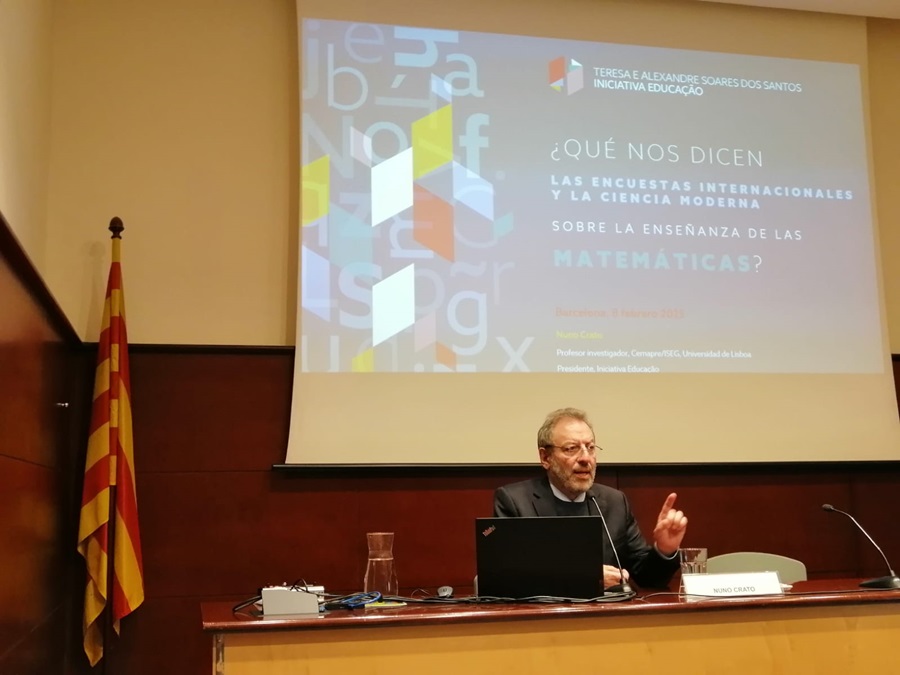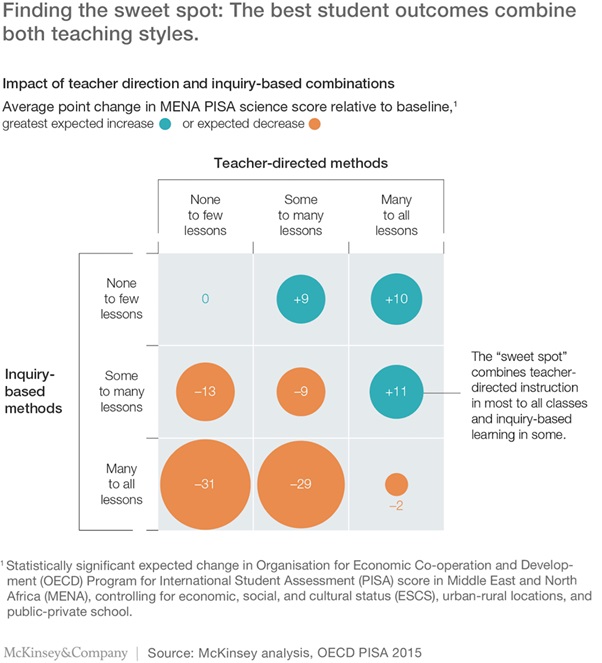- Mathematics
- 13 de February de 2025
- No Comment
- 7 minutes read
The Importance of Direct Instruction in Mathematics Learning

The Importance of Direct Instruction in Mathematics Learning


The Societat Catalana de Matematiques (SCM) has expressed concern regarding the level of mathematical competence demonstrated by students in Catalonia at all educational levels. This concern led to the organisation of the “Ancoratges en el currículum” (Anchors in the Curriculum) conference last week in Barcelona.
One of the keynote speakers was Professor Nuno Crato, former Minister of Education of Portugal, renowned for his crucial role in improving Portuguese students’ results in international PISA assessments. These assessments, in which Catalonia performs worryingly in comparison to other OECD countries, serve as a key indicator of the quality of the education system.
Professor Crato’s lecture, entitled “What Do International Surveys and Modern Science Tell Us About Mathematics Teaching?“, covered several topics. Given the impossibility of summarising his entire discourse in this article, we strongly recommend listening to some of his lectures on the analysis of international educational assessment results.
In this article, we will focus on a key idea presented by Professor Crato that can be easily applied in classrooms. The implementation of this idea ultimately depends on political will.
PISA and TIMSS assessments provide a valuable comparative perspective on the evolution of education both between countries and within a single country over time. The analysis of these test results allows for the identification of the most effective measures to be implemented in the classroom.
Through an exhaustive analysis of the data, it is possible to determine the factors associated with students’ scientific academic performance. To illustrate these factors, it is essential to examine the following graph:

The analysis presented by Professor Crato should put an end to the debate on the mantra that has become popular in Catalan schools in recent years: “The student must be at the centre of their own learning”.
With empirical data in hand, Crato demonstrates that direct instruction is the most easily improved factor in the classroom and has a positive impact on students’ academic performance in scientific subjects. Conversely, discovery-based instruction exhibits a negative correlation with the improvement of such performance.
Crato emphasised that a student, regardless of the subject, is a “beginner”. As such, only direct instruction ensures an adequate organisation of knowledge, progressing from simpler to more complex concepts, and facilitates the long-term retention of knowledge so that it can be retrieved by “working memory” when needed. In his words: “To apply knowledge, one must first possess knowledge”.
Once a student has attained an “expert” level in a particular subject, it may be beneficial to introduce certain discovery-based exercises.

Professor Crato concluded his presentation with a powerful statement: “The countries that achieve the best results are those that focus teaching on knowledge, not on competencies”.
Additional Commentary: During one of the subsequent discussions, a participant questioned the relevance of competencies in the decline of Catalonia’s PISA results, arguing that many teachers have yet to implement them in the classroom. This intervention was countered by Josep Coll, an inspector in the Balearic Islands, who provided data and historical context illustrating how Spanish educational policy has progressively redesigned the curriculum since the early 1990s. This evolution has led to a paradigm shift, moving from a structured textbook approach to the current model, which places the student at the centre of learning, emphasising competencies that are ambiguously defined, originate from the economic rather than the educational sphere, and promote discovery-based learning methodologies.
Consequently, since the LOGSE curriculum, obstacles have been placed in the way of direct instruction of knowledge in the classroom.
___
References:
We share some of the readings recommended by Nuno Crato:
Improving a Country’s Education. Open access available online.
https://link.springer.com/book/10.1007/978-3-030-59031-4
Developing Curriculum for Deep Thinking. Open access available online:
https://link.springer.com/book/10.1007/978-3-031-74661-1
Additionally, we highly recommend visiting the website of the foundation he directs:
Teresa and Alexandre Soares dos Santos – Iniciativa Educação.
https://www.iniciativaeducacao.org/en
Interviews with Nuno Crato in Educational Evidence:
Nuno Crato: “Textbooks are essential for good training”
Europe must make way for enlightened elites to rethink its educational model
Nuno Crato: “How about focusing on reality, on data?”
Source: educational EVIDENCE
Rights: Creative Commons

